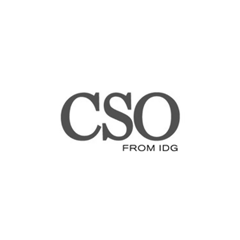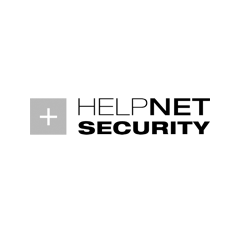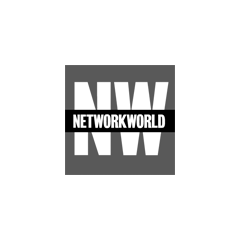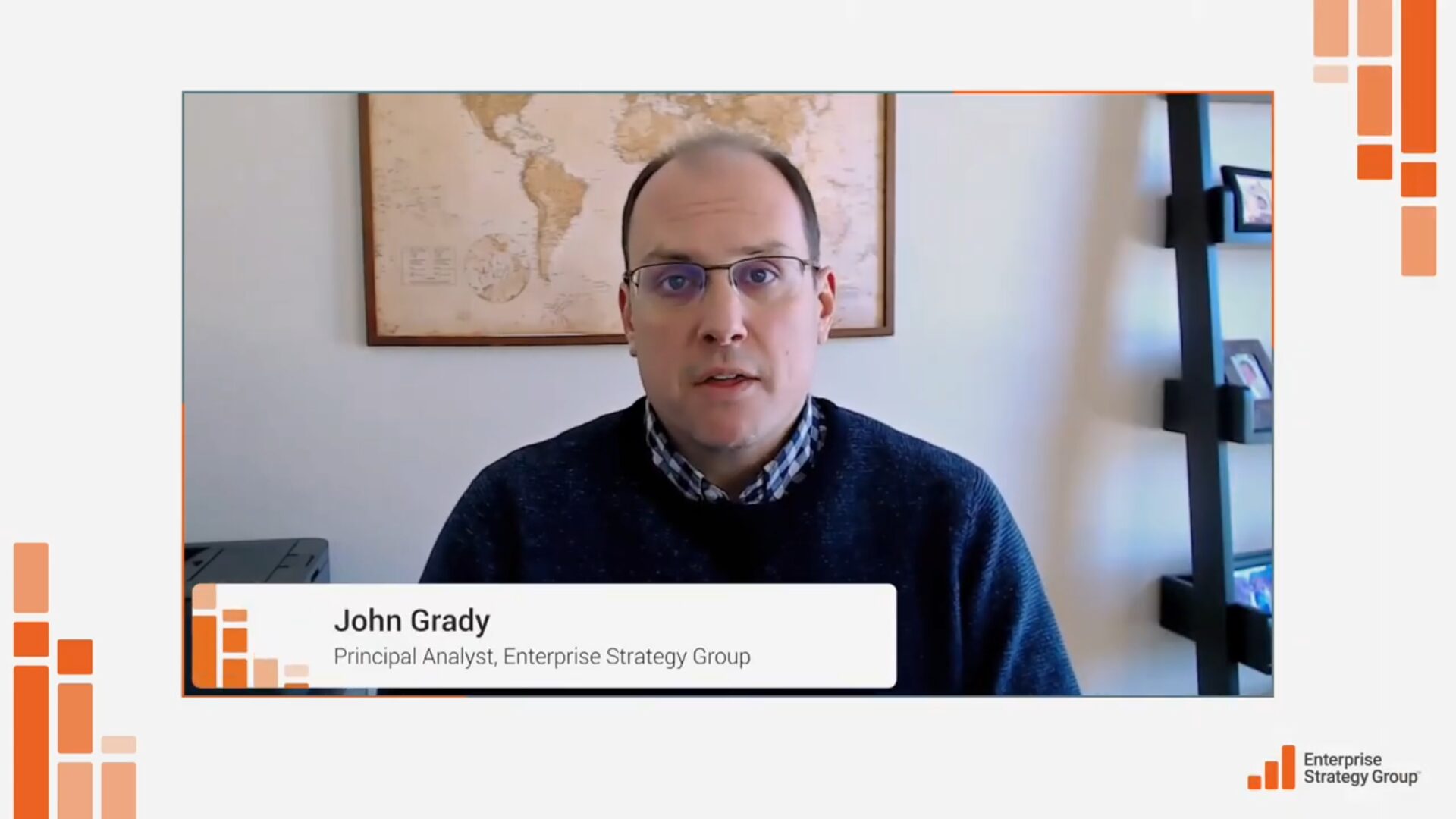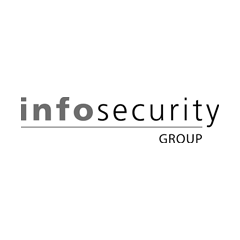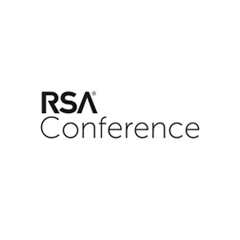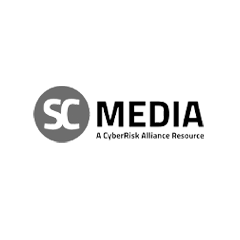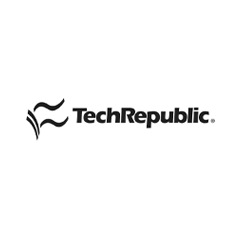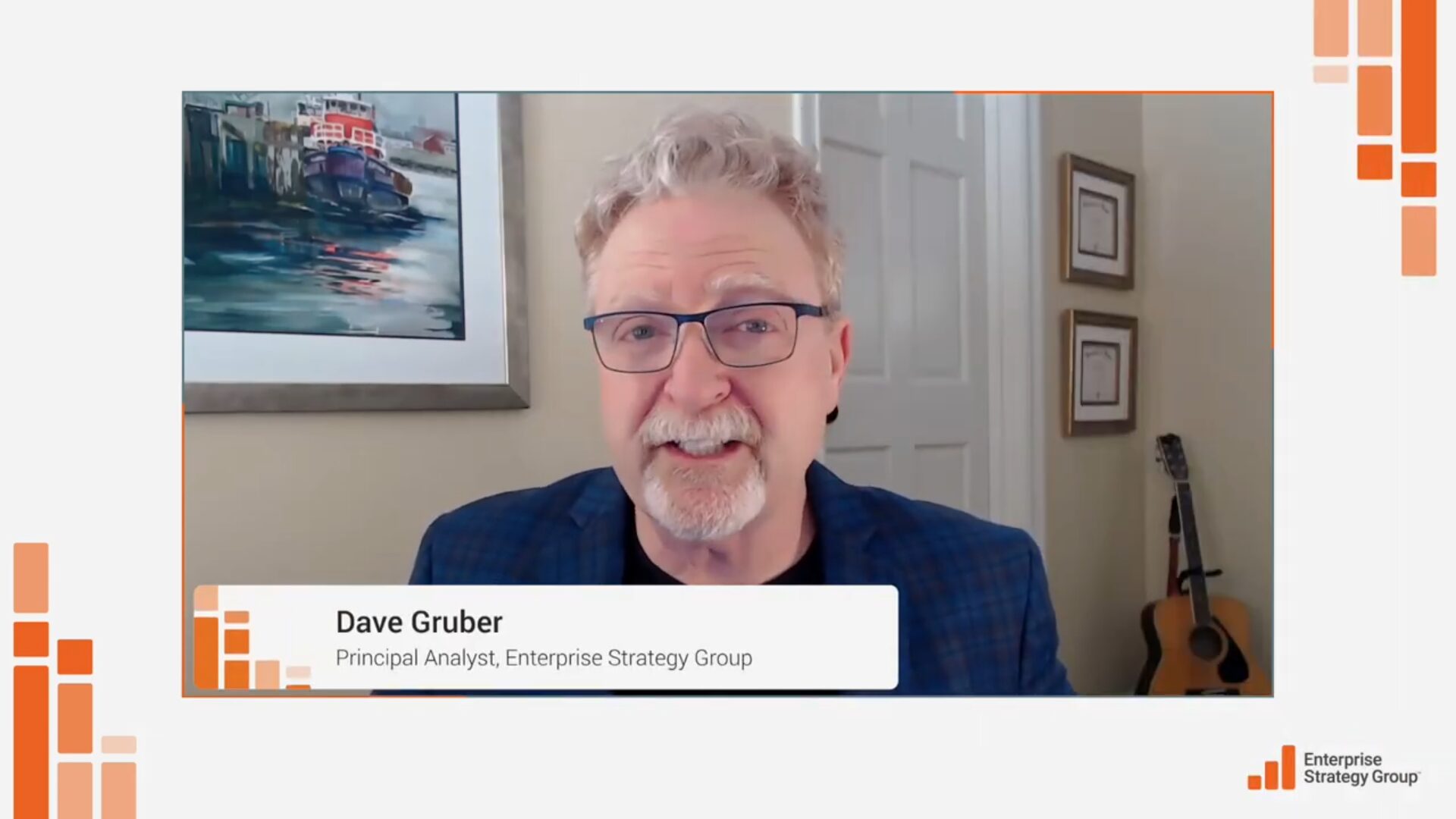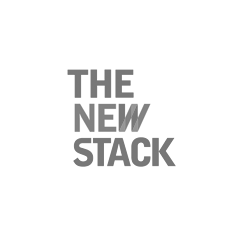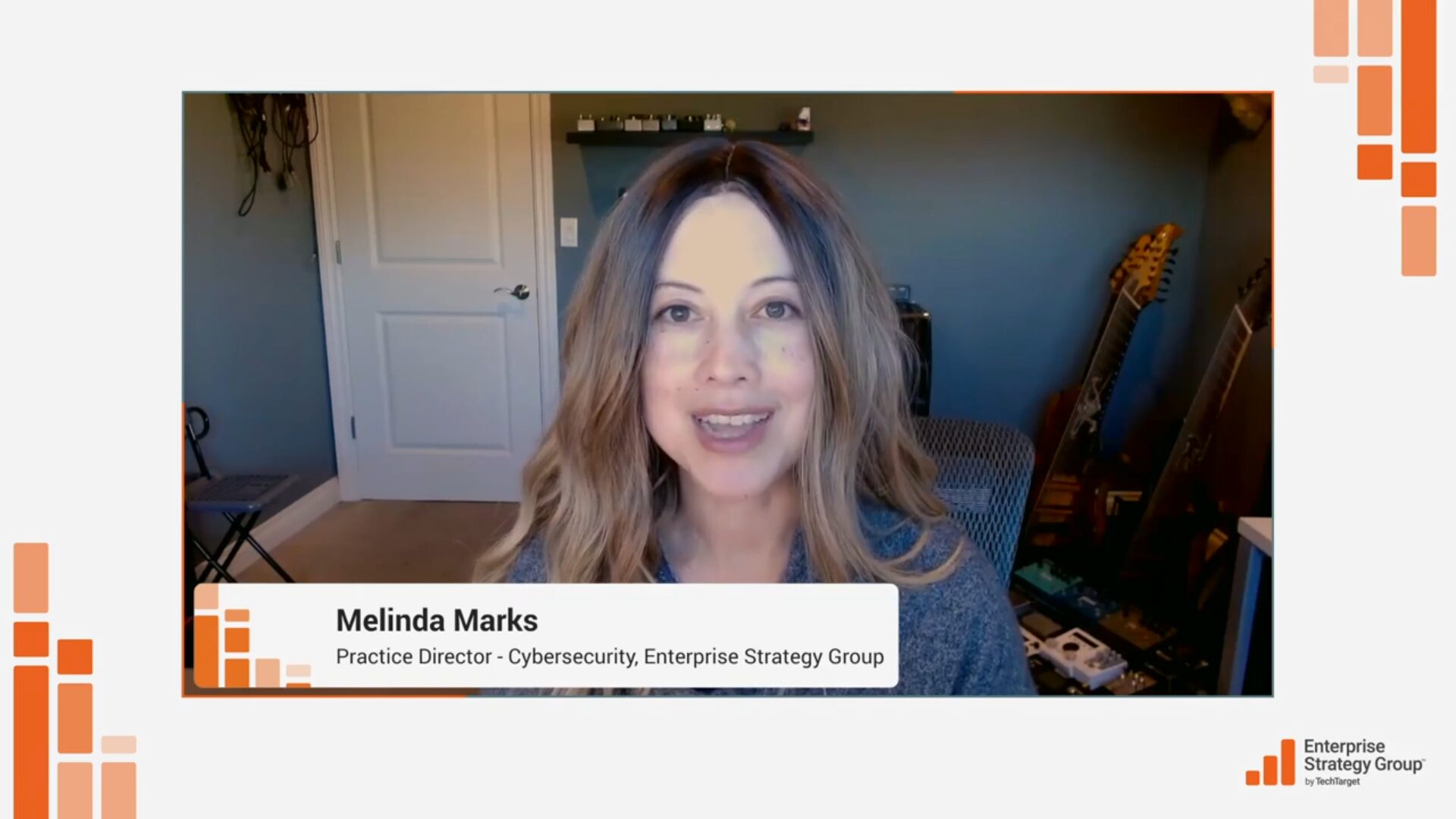Most enterprise organizations have threat intelligence programs in place, and CISOs try to anchor them with the right staffing, processes, and oversight. While organizations strive to follow best practices, threat intelligence programs can be challenging, leading to suboptimal results. To succeed, programs should follow a threat intelligence lifecycle over six phases.
Cybersecurity & Networking
-
-
About
Principal Analyst John Grady uses his nearly 20 years of IT vendor and analyst experience to help clients identify and understand key market trends, refine their messaging, and be more successful in the marketplace.
Prior to joining Enterprise Strategy Group, John spent four years at Symantec, where he was responsible for market insights and analytics supporting product, go-to-market, and executive stakeholders.
Previously, John worked as an analyst at IDC covering network, web, and email protection and leading initial research initiatives on then-emerging areas such as advanced threat prevention and DDoS protection. As an analyst, he has also focused on infrastructure channels, advising clients on indirect go-to-market strategies.
John has written for Dark Reading and has been quoted in Network World, CSO, eWeek, CRN, Silicon Angle, ITPro, SDX, HelpNet Security, and TechTarget, among others. He holds a BA in History from Providence College in Providence, Rhode Island.

For all the talk of the perimeter being dead, network security remains a fundamental aspect of IT security. That said, the distributed nature of the modern enterprise creates new challenges that must be addressed. So, the pace of change and innovation in this space has quickened.”
John Grady
Principal Analyst, Network Security & Web Application Security
Survey Results
Securing SaaS Ecosystems Survey
This Complete Survey Results presentation focuses on the top use cases for SaaS security, the benefits realized or expected by organizations implementing different SaaS security practices, and the key stakeholders across the SaaS security buyer’s journey. Already an Enterprise Strategy Group client? Log in to read the full report. If you are not yet a Subscription […]
John Has Appeared In






Latest Insights from John
Infographic | September 12, 2025
Networking and Security Convergence: Assessing SASE Progress and Best Practices
Research Report | September 12, 2025
Networking and Security Convergence: Assessing SASE Progress and Best Practices
Survey Results | September 12, 2025
Networking and Security Convergence: Assessing SASE Progress and Best Practices
Video | July 7, 2025
Balancing Requirements for Application Protection
See John’s Content on TechTarget
-
About
Principal Analyst Dave Gruber helps product marketing and management leaders develop winning strategies in highly competitive markets.
Prior to joining Enterprise Strategy Group, Dave held executive leadership roles at successful endpoint and application security companies. Most recently, he was the VP of Product Marketing at Carbon Black through its IPO, and previously he was VP of Products at Black Duck Software (acquired by Synopsys) where he led product marketing and product management.
In his current analyst role, Dave researches CISOs’ and security teams’ most pressing needs, working together with security vendors to develop successful product and go-to-market strategies, positioning, and messaging. Building on a strong technical background with early roles in enterprise application development, Dave became interested in figuring out why some products were more successful than others, which eventually led him to senior roles in software product management and product marketing.
Dave has appeared in Cybersecurity News, SC, InfoSecurity, TechRepublic, Dark Reading, RSAC, and ITPro Today, among others. He holds a BS in Computer Science from the University of Maine in Orono.

Converging disparate tools into a smaller number of mini platforms is helping reduce complexity while increasing efficacy through more tightly integrated security controls and operational workflows.”
Dave Gruber
Principal Analyst, Ransomware, SecOps & Services
Research Report
The Triad of Security Operations Infrastructure: XDR, SIEM, and MDR
Security operations grow more difficult each year due to issues such as the persistent threat landscape, a growing attack surface, and the volume and complexity of security alerts. Additionally, many SOC teams remain understaffed and lack advanced security operations skills. To address these challenges, CISOs are open to evaluating new technologies in areas like advanced […]
Dave Has Appeared In






Latest Insights from Dave
Infographic | August 1, 2025
The Changing Role of Managed Detection and Response (MDR) Providers in the AI Era
Research Report | August 1, 2025
The Changing Role of Managed Detection and Response (MDR) Providers in the AI Era
Survey Results | August 1, 2025
The Changing Role of Managed Detection and Response (MDR) Providers in the AI Era
Video | July 7, 2025
Midmarket and Small Enterprise Cybersecurity Program Development
See Dave’s Content on TechTarget
-
About
Practice Director Melinda Marks leads ESG’s analyst team focused on cybersecurity. Melinda covers technologies that help organizations scale safely while adopting faster cloud-native development cycles.
With more than 20 years of experience in technology marketing and strategy, Melinda is passionate about conveying product value and differentiation and driving revenue.
Prior to joining Enterprise Strategy Group, Melinda was chief marketing and strategy officer for Soluble, a startup focused on automating application security testing for developers (acquired by Lacework). She was also VP of Marketing at Armorblox, VP of Marketing at Styra, and head of marketing for StackRox (acquired by Red Hat). Her experience includes running competitive/market intelligence and product marketing teams at Tenable and running global communications for four years at Qualys. She also spent many years at VMware, where she built its original customer reference program, led product PR, and was on the core planning team for VMworld since its inception.
Melinda is a Synopsys Outreach Foundation board member. She holds a bachelor’s degree in English from the University of California at Berkeley.

Security solutions are evolving rapidly to meet the needs of rapid modern software development lifecycles and digital transformation leveraging cloud platforms.”
Melinda Marks
Practice Director, Cybersecurity
Survey Results
2024 Cloud Security Platforms and DevSecOps
This Complete Survey Results presentation focuses on the scope of cloud-native application development environments, including the top challenges associated with securing cloud-native applications and the security solutions in place to protect cloud infrastructure and applications. Already an Enterprise Strategy Group client? Log in to read the full report. If you are not yet a Subscription Client […]
Melinda Has Appeared In






Latest Insights from Melinda
Video | July 7, 2025
Modernizing Application Security to Scale for Cloud-native Development
Video | July 7, 2025
API Security from Development to Runtime
Research Brief | June 30, 2025
AWS Shield Network Security Director Provides Mapping for Contextual Understanding to Mitigate Risk and Speed Response
Research Brief | June 6, 2025
The Imperative to Involve Security Starting Early in Application Development Processes
See Melinda’s Content on TechTarget
-
About
As Enterprise Strategy Group’s regional director of analyst services for APAC, Aaron Tan helps clients identify and quantify key market trends on a wide range of technology topics, including cloud infrastructure, DevOps, business applications, and cybersecurity in the Asia-Pacific region.
Aaron also serves as Editor in Chief, APAC at ESG’s parent company, TechTarget.
Aaron is a seasoned media and information professional who has been involved in technology implementations in the public sector and has nearly two decades of experience covering B2B technology for leading media companies. He has held various managerial roles in the Singapore public sector, including the National Library Board of Singapore and the Infocomm Media Development Authority.
Aaron holds a bachelor’s degree in Communications from Nanyang Technological University Singapore and a master’s degree in Information Science from Syracuse University in Syracuse, New York.

The growing use of public cloud services in Asia-Pacific has not only drawn cloud suppliers to the region but also integration platform players who provide the glue that ties cloud services together in a multi- cloud and hybrid IT environment.”
Aaron Tan
Regional Director Analyst Services, APAC -
Requirements from widespread work-from-anywhere policies have escalated the need for endpoint management and security convergence. IT and security teams require new mechanisms capable of providing common visibility, assessment, mitigation of software and configuration vulnerabilities, threat prevention, and support for threat investigation and response activities.
Learn more about these trends with the infographic, Managing the Endpoint Vulnerability Gap.
-
Digital transformation initiatives and remote work have further accelerated the migration of data assets to cloud stores. However, organizations are finding that sensitive data is now distributed across multiple public clouds. The use of disparate controls has led to a lack of consistent visibility and control, putting cloud-resident data at risk of compromise and loss. TechTarget’s Enterprise Strategy Group recently surveyed IT, cybersecurity, and DevOps professionals in order to gain insights into these trends.
Learn more about these trends with the infographic, The Cloud Data Security Imperative.





